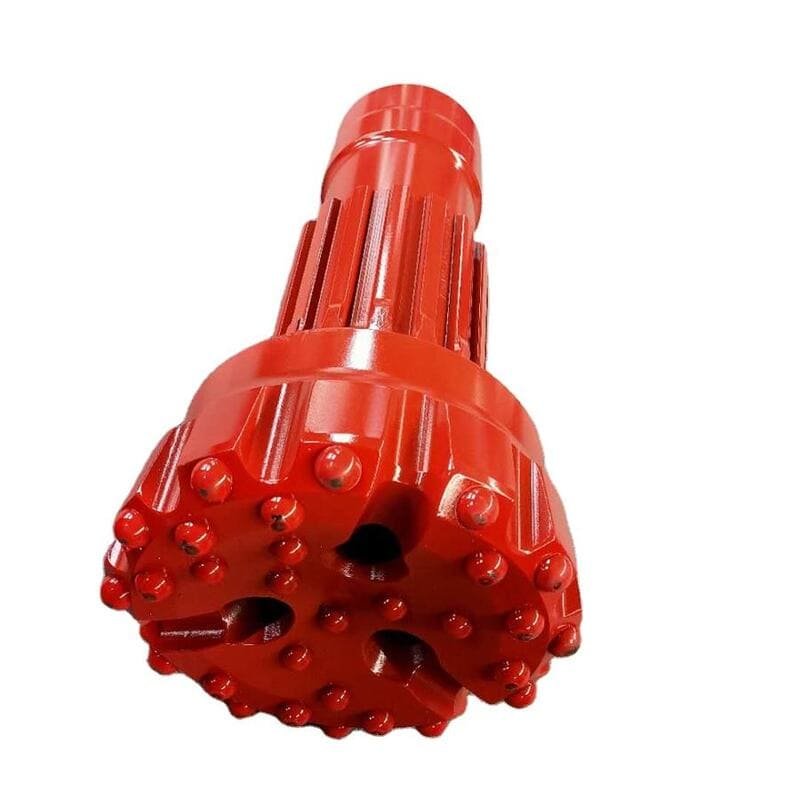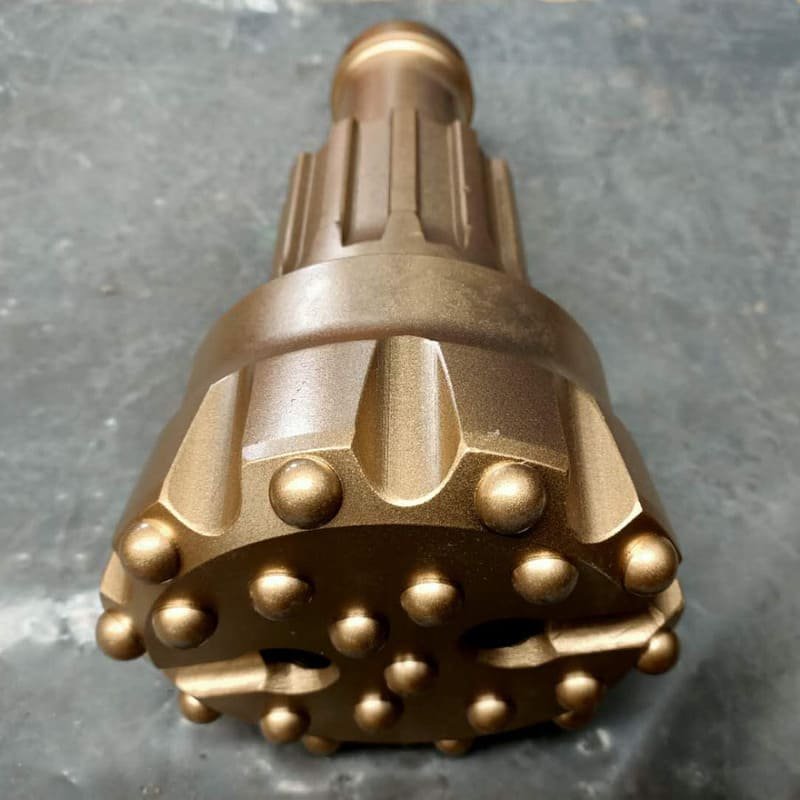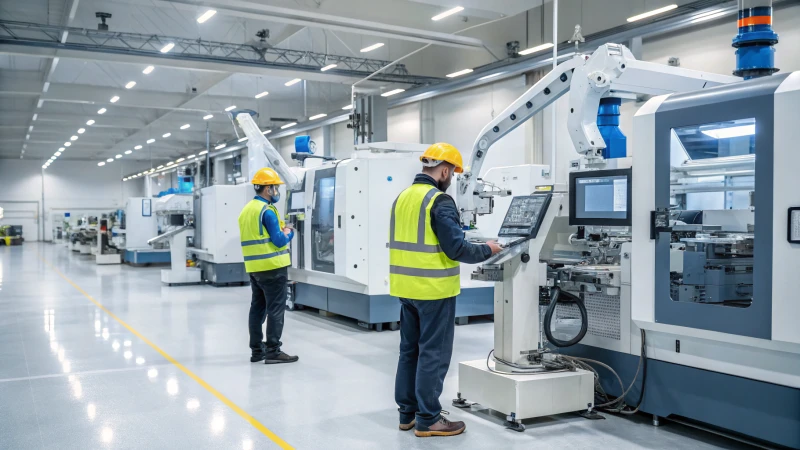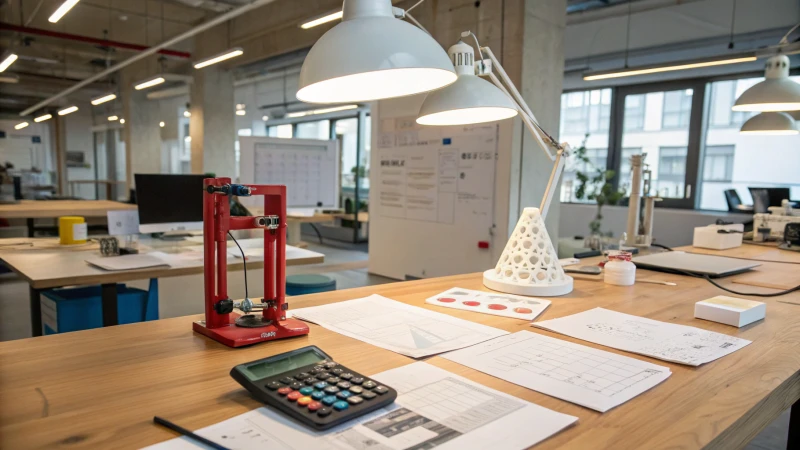When I first ventured into customizing DTH drill bit designs, I was both excited and cautious about the costs involved.
The costs of customizing DTH drill bit surface designs hinge on design complexity, materials, and manufacturing precision. Intricate designs and premium materials can drive up expenses, but they enhance performance for specific drilling conditions, making them a worthwhile investment.
While the initial sticker shock might catch you off guard, the long-term benefits of customization often tip the scales in favor of spending a bit more upfront. I remember a project where we opted for intricate designs and top-tier materials—yes, it was pricier, but the efficiency gains in challenging rock formations were undeniable. Let's explore what factors into these costs and how you can make the most out of your investment in custom drill bits.
Intricate drill bit designs cost more than simple ones.True
Complex designs require more time and precision, increasing manufacturing costs.
High-quality materials decrease customization costs.False
Using premium materials typically raises the overall cost of production.
How Does Design Complexity Affect Customization Costs?
Ever thought about how the intricacies of a design could send your customization budget soaring?
Complex designs can significantly drive up customization costs due to increased engineering efforts, specialized materials, and extended production times. Intricate designs often require advanced manufacturing techniques, elevating expenses for innovators mindful of their budgets.

The Role of Engineering Efforts
I've always been fascinated by how much work goes into making something truly unique. One time, I wanted to add a custom button layout1 to a product I was working on. Sounds simple enough, right? But it turned out that even this small change demanded a whole lot of engineering brainpower. The precise calculations and the simulations needed to ensure it would work flawlessly in various conditions were no joke. It's like crafting a new recipe where every ingredient must be measured to the milligram.
Material Selection and Usage
And then there's the material choice2—think of it like choosing between a plain cotton shirt and one made of luxurious silk. Complex designs often require premium materials to get the desired performance, like high-performance alloys. I remember a project where the scarcity of the material itself was a hurdle. It not only drove up the costs but also made me realize how much these little details matter when you're aiming for perfection.
Production Time and Techniques
Have you ever waited in line for something really good? That's what production can feel like with complex designs. Advanced manufacturing processes such as CNC machining or 3D printing are often necessary, which can extend the wait time and the costs. I learned this the hard way when a project required such high precision requirements3 that it felt like we were crafting something for NASA. The labor costs alone were eye-opening.
Economies of Scale
Here's where ordering in bulk can be your best friend. Larger orders help spread out those pesky fixed costs, reducing the cost per unit. But if you're going small-scale, brace yourself for the concentrated setup costs that don't quite distribute as nicely.
| Factor | Impact on Costs |
|---|---|
| Engineering Efforts | Increased design and testing needs |
| Material Usage | Higher costs for premium materials |
| Production Techniques | Advanced methods leading to higher expenses |
| Order Volume | Potential cost reduction through bulk ordering |
Manufacturer's Capabilities and Fees
Finally, choosing the right manufacturer is like picking the right teammate in a game—essential for victory. Some manufacturers might charge extra for design consultations or deviations from their standard offerings. I recall once being caught off guard by consultation fees4 that were necessary for implementing a unique feature I had envisioned.
Understanding these aspects has been pivotal in helping me assess whether the benefits of a complex design outweigh the additional costs involved. It’s like balancing on a tightrope, where every decision needs careful consideration.
Complex designs require premium materials.True
Complex designs often use high-performance alloys, raising costs.
Economies of scale increase costs for complex designs.False
Bulk orders reduce costs per unit by distributing fixed expenses.
How Do Materials Impact Cost Variations?
Ever wondered why the same product can cost wildly different amounts? It often boils down to the materials used.
Materials influence cost variations by impacting production expenses, quality, and durability. Scarcity, market demand, and geopolitical conditions can cause material costs to fluctuate, thus affecting the final product price.

The Impact of Material Selection
Choosing the right materials is like picking the perfect ingredients for a recipe. I remember when I was remodeling my kitchen; opting for high-end granite countertops was a splurge. But, boy, did it change the whole vibe! Just like that, in manufacturing, selecting premium materials like advanced tungsten carbide5 might hike up costs due to scarcity and demand. On the flip side, going for more common materials might save some bucks but could compromise on durability and performance.
Market Demand and Scarcity
I once saw how quickly avocado prices soared during a shortage—it was wild! Similarly, material costs can skyrocket when demand outstrips supply. Especially in industries relying on specialized applications6, any spike in demand can lead to unexpected price jumps. Keeping an eye on these trends is crucial for pricing strategies.
Geopolitical Influences
Geopolitical events are like unexpected plot twists in a novel—they can totally throw you off track. Trade restrictions or sanctions can suddenly make essential raw materials hard to get, causing prices to rise. Navigating these challenges might mean diversifying supply chains or finding alternative materials.
Manufacturing Techniques and Material Efficiency
Innovative manufacturing techniques are game-changers. They remind me of precision cooking—a little bit of this, a touch of that, and voila! Advanced techniques like precision engineering7 optimize material use, minimizing waste and cutting costs. Recycling and reusing materials can also help keep expenses down while boosting sustainability.
Case Studies: Industry Examples
In the aerospace world, swapping traditional aluminum for composite materials8 cut aircraft weight by 20%, leading to fuel savings over time. It's like when I switched from regular to lightweight camping gear—it made my hikes so much easier! Similarly, using recycled concrete in construction offers a budget-friendly solution without losing structural integrity.
Analyzing Cost Variability
Understanding cost variability is like piecing together a puzzle—it all fits together once you see the bigger picture:
| Material Type | Cost Variability | Impact Factors |
|---|---|---|
| Premium Metals | High | Scarcity, demand |
| Recycled Materials | Low | Availability, processing |
| Composite Materials | Moderate | Technology advancements |
| Natural Fibers | Moderate to High | Climate conditions |
Balancing these factors helps industries maintain competitive pricing without compromising product quality. It's all about making informed choices that align with business goals.
Premium materials always reduce costs.False
Premium materials often increase costs due to scarcity and demand.
Geopolitical events can affect material costs.True
Trade restrictions or sanctions can create shortages, raising prices.
Why Is Manufacturing Precision Important for Customization?
Ever tried assembling furniture only to find the pieces don't quite fit? That's why precision matters in manufacturing.
Precision in manufacturing is essential for customization because it guarantees products meet exact specifications, boosting quality, performance, and customer satisfaction. It minimizes errors and waste, resulting in cost savings.

The Role of Precision in Manufacturing
You know that feeling when you're building something, and everything just clicks into place perfectly? That's what manufacturing precision is all about—producing parts that match exact dimensions and tolerances. This accuracy is especially crucial in customization processes9 where each product might come with its own unique quirks.
Enhancing Quality and Performance
When it comes to quality, precision is non-negotiable. Imagine crafting a piece of machinery where every component needs to fit like a glove. That's the kind of precision you need in industries like aerospace or medical devices, where even the slightest deviation can lead to major performance issues10. It's about ensuring that each piece performs exactly as it should, every single time.
| Aspect | Impact of Precision |
|---|---|
| Fit & Function | Ensures components fit perfectly |
| Reliability | Reduces failure rates |
| Durability | Enhances lifespan of products |
Cost Implications and Waste Reduction
Precision isn't just about quality; it's also about saving money. When products are made accurately, there's less material waste, fewer defects, and fewer headaches down the line. This is particularly important in customization scenarios11, where every piece can be different, and waste becomes an expensive problem.
Meeting Specific Customer Requirements
Think about customization as tailoring a suit: every detail must be spot on to meet the client's vision. Precision ensures that these specific needs are met perfectly, enhancing customer satisfaction. In industries like automotive or consumer electronics, precision allows for tailor-made solutions that truly elevate the user experience.
Technological Advancements Supporting Precision
Thanks to modern marvels like CNC machining and 3D printing, achieving high levels of precision has become much easier. These technologies allow for complex and customized designs12 to be realized with incredible accuracy and efficiency.
Ultimately, precision is the backbone of customization. It lays the groundwork for creating high-quality, bespoke products that meet the exact needs of clients across a variety of industries.
Precision reduces manufacturing waste.True
Accurate production decreases defects, minimizing material waste.
Customization decreases the need for precision.False
Customization requires high precision to meet specific client needs.
How do prototyping and testing impact overall expenses?
Ever wondered how the stages of prototyping and testing can make or break your budget? Let's dive into how they influence costs and how you can balance innovation with expense.
Prototyping and testing can impact expenses both positively and negatively. While they initially raise costs through iterative designs and material use, they also prevent expensive errors and ensure product effectiveness, leading to long-term cost optimization.

The Cost of Prototyping: An Investment or a Liability?
I remember when I first embarked on a product development journey, I was taken aback by how quickly prototyping expenses added up. Prototyping involves creating preliminary versions of a product to explore design concepts and test functionality. Yes, it can be pricey due to the materials, skilled labor, and technology required. However, the benefits often outweigh these expenses by identifying potential flaws early. A well-crafted prototype minimizes risks of costly redesigns down the road.
| Prototyping Element | Potential Costs |
|---|---|
| Materials | High-quality inputs |
| Labor | Skilled technicians |
| Equipment | Advanced machinery |
Testing: The Hidden Costs and Savings
Testing, in my experience, is like insurance for your product. It ensures that everything works as expected under various conditions—functionality, safety, and performance are all verified. While comprehensive testing might seem expensive13 initially, it prevents massive costs related to product failures or recalls. By investing in thorough testing, you make sure your product meets all necessary standards and lives up to customer expectations.
Balancing Cost and Quality in Prototyping and Testing
Finding the sweet spot between cost and quality isn't easy. Striking the right balance between cost and quality in prototyping and testing can be challenging. I’ve learned some strategies over time:
- Leveraging virtual prototypes14 to reduce material costs.
- Implementing iterative testing methods for efficient design improvements.
- Collaborating with suppliers to access cost-effective materials.
Considering these options helps businesses manage expenses while maintaining high standards of product development.
Benefits Beyond Cost: Enhancing Innovation and Marketability
When it comes to prototyping and testing, there’s more than just cost at stake. These processes can drive innovation by allowing bold experimentation without significant risk. This approach encourages more daring designs that could potentially revolutionize markets15, offering a competitive edge by delivering unique products that resonate with consumers. Plus, well-tested products boost brand reputation and market appeal, building trust with customers and potentially driving sales.
Prototyping always increases overall project expenses.False
While prototyping incurs costs, it can reduce long-term expenses by preventing costly redesigns.
Testing prevents future product recalls and failures.True
Comprehensive testing ensures products meet standards, reducing the risk of recalls.
How Can Order Volume Influence Customization Costs?
Ever wondered if ordering more customized products could actually save you money?
Ordering larger volumes of customized products can indeed reduce per-unit costs, thanks to economies of scale. This means spreading fixed costs, like initial design and setup, across more units, which lowers the cost per item.

Understanding Economies of Scale in Customization
Picture this: You're planning a family reunion and need custom T-shirts with everyone's names and a quirky family motto. You'd think, "The more, the merrier," right? Well, in business, it works similarly when ordering customized products. Increasing your order volume allows you to benefit from economies of scale16. This principle is all about spreading those pesky fixed costs—like design and setup fees—over a larger number of items, thereby reducing the cost per unit.
Take, for instance, the production of custom drilling equipment17. Initially, there's a lot to tackle: designing unique components and configuring machinery to handle these customizations. But as you increase production, these initial costs get spread out over more units, effectively lowering the cost per item. It’s like splitting a pizza bill; the more friends join in, the less each pays!
Analyzing Cost Structures
To truly understand how order volume can affect customization costs, it's crucial to break down the cost structure:
| Cost Type | Description |
|---|---|
| Fixed Costs | Costs like design and setup that remain constant. |
| Variable Costs | Costs that vary with production volume, like materials. |
By ramping up order volume, I can better leverage these fixed costs, which results in lower average costs per unit. It's like a win-win situation where you get more while paying less per item!
Negotiating with Manufacturers
Ah, the art of negotiation! I've often found that manufacturers are open to offering discounts on larger orders due to reduced operational costs associated with high-volume production. Engaging in strategic negotiations18 can secure me better pricing.
Furthermore, by increasing order volume, I might even influence the design process. This collaboration could lead to more efficient production methods and further cut down on customization costs.
Practical Applications and Examples
Imagine a scenario where I'm customizing DTH drill bits19. If my initial order is just 100 units, the cost per unit might be steep due to extensive setup time. However, if I scale this order up to 1,000 units, the per-unit cost decreases as those initial setup costs are divided over a greater number of items.
Additionally, ordering in bulk often allows me to purchase raw materials at a lower cost, further driving down expenses. By exploring these opportunities, I make more informed decisions about my production strategies.
Higher order volumes reduce per-unit customization costs.True
Economies of scale lower costs by spreading fixed expenses over more units.
Fixed costs increase with higher order volumes.False
Fixed costs remain constant; they don't change with production volume.
What Additional Fees Might Manufacturers Charge?
Ever wondered why your manufacturing bill is higher than expected? Let's dive into those sneaky additional fees that manufacturers might slip in and how they could affect your budget.
Manufacturers often tack on extra fees beyond basic production costs, including design consultations, customization, prototyping, and fees for small order volumes or rush jobs.

I remember the first time I got hit with unexpected manufacturing fees. It felt like a surprise party without the cake. These fees can really catch you off guard if you're not prepared. Here’s a closer look at what you might encounter:
Design and Consultation Fees
When you're customizing a product, like tweaking those DTH drill bits, manufacturers often charge for design consultations. This covers the time engineers spend ensuring the design meets your unique specifications.
| Service | Potential Fee |
|---|---|
| Design Consultation | 5% - 10% of total cost |
| Customization | Varies by complexity |
These fees can seem steep, but understanding design fees20 helps in planning your budget.
Customization Charges
Every tweak and change adds to the complexity—and the cost. Remember when I decided to modify a drill bit's face angles? The engineering workload increased, and so did the fees.
Products that deviate from standard specifications incur customization fees. These fees are proportional to the complexity of the design changes.
Prototyping and Testing Costs
Developing something new or making significant changes? Prototyping is essential to ensure everything works as planned. I learned this the hard way when I skipped it once and ended up with a batch that didn't perform well.
Testing fees also cover necessary trials to validate performance under specific conditions, which is crucial for getting it right.
Small Order Volume Fees
Ever placed a small order and noticed the price per unit shoot up? That's because manufacturers spread fixed costs over fewer units, which can lead to a 15% - 25% increase per unit for orders under 50 units.
| Order Volume | Potential Fee Increase |
|---|---|
| Small (1-50 units) | +15% - 25% per unit |
| Medium (51-200 units) | Standard pricing |
Learn more about manufacturer volume fees21 and how they can impact your pricing strategy.
Expedited Production Fees
Need something fast? Urgent requests can disrupt normal schedules, leading to overtime or resource reallocation. Once, I needed a batch expedited, and the expedite fees were a wake-up call.
Understanding these fees and why they exist22 is crucial for managing timelines efficiently. It's all about planning and knowing what to expect so you can avoid surprises along the way.
Design consultation fees are a fixed cost.False
Design consultation fees typically range from 5% to 10% of total cost.
Small order volumes incur higher fees per unit.True
Smaller orders often have a fee increase of 15% to 25% per unit.
Conclusion
Customizing DTH drill bits involves costs influenced by design complexity, materials, manufacturing precision, and order volume. While initial expenses may be high, long-term benefits often justify the investment.
-
Learn why button layout is crucial in achieving optimal drill bit performance and how it impacts design complexity. ↩
-
Explore how selecting different materials influences the cost and quality of customized products. ↩
-
Understand the advantages of precision manufacturing and its role in executing complex designs. ↩
-
Discover how consultation fees can vary based on the complexity of custom designs. ↩
-
Understanding the reasons behind the high cost of advanced tungsten carbide can help industries budget effectively and choose suitable alternatives. ↩
-
Exploring specialized applications can provide insights into how scarce materials are utilized across different industries. ↩
-
Learning about precision engineering techniques can reveal strategies to enhance material efficiency and cut costs. ↩
-
Discovering the advantages of composite materials in aerospace can highlight potential cost savings and performance improvements. ↩
-
Explore why precision is vital in achieving customized manufacturing solutions. ↩
-
Learn about how precision impacts product performance across different sectors. ↩
-
Discover how precision manufacturing can lead to significant cost savings by reducing waste. ↩
-
Find out about modern technologies that support high precision in manufacturing. ↩
-
Knowing testing expenses helps plan resources wisely, ensuring thorough evaluation without overspending. ↩
-
Exploring virtual prototyping can reveal cost-saving alternatives to physical models. ↩
-
Enhancing marketability through rigorous testing can boost sales by ensuring product reliability. ↩
-
This link provides a deeper understanding of economies of scale and how they reduce costs. ↩
-
Explore real-world examples of how increased orders impact drilling equipment costs. ↩
-
Learn effective negotiation strategies for securing bulk order discounts. ↩
-
Discover specific strategies to reduce costs in DTH drill bit customization. ↩
-
Learn about standard design consultation fees to plan your project budget effectively. ↩
-
Understand how small order volumes affect pricing and manage your orders wisely. ↩
-
Discover reasons behind expedited production fees to manage project timelines better. ↩








